Zhenheng Yang
End-to-End Training for Autoregressive Video Diffusion via Self-Resampling
Dec 17, 2025Abstract:Autoregressive video diffusion models hold promise for world simulation but are vulnerable to exposure bias arising from the train-test mismatch. While recent works address this via post-training, they typically rely on a bidirectional teacher model or online discriminator. To achieve an end-to-end solution, we introduce Resampling Forcing, a teacher-free framework that enables training autoregressive video models from scratch and at scale. Central to our approach is a self-resampling scheme that simulates inference-time model errors on history frames during training. Conditioned on these degraded histories, a sparse causal mask enforces temporal causality while enabling parallel training with frame-level diffusion loss. To facilitate efficient long-horizon generation, we further introduce history routing, a parameter-free mechanism that dynamically retrieves the top-k most relevant history frames for each query. Experiments demonstrate that our approach achieves performance comparable to distillation-based baselines while exhibiting superior temporal consistency on longer videos owing to native-length training.
AgentComp: From Agentic Reasoning to Compositional Mastery in Text-to-Image Models
Dec 09, 2025Abstract:Text-to-image generative models have achieved remarkable visual quality but still struggle with compositionality$-$accurately capturing object relationships, attribute bindings, and fine-grained details in prompts. A key limitation is that models are not explicitly trained to differentiate between compositionally similar prompts and images, resulting in outputs that are close to the intended description yet deviate in fine-grained details. To address this, we propose AgentComp, a framework that explicitly trains models to better differentiate such compositional variations and enhance their reasoning ability. AgentComp leverages the reasoning and tool-use capabilities of large language models equipped with image generation, editing, and VQA tools to autonomously construct compositional datasets. Using these datasets, we apply an agentic preference optimization method to fine-tune text-to-image models, enabling them to better distinguish between compositionally similar samples and resulting in overall stronger compositional generation ability. AgentComp achieves state-of-the-art results on compositionality benchmarks such as T2I-CompBench, without compromising image quality$-$a common drawback in prior approaches$-$and even generalizes to other capabilities not explicitly trained for, such as text rendering.
FOCUS: Efficient Keyframe Selection for Long Video Understanding
Oct 31, 2025Abstract:Multimodal large language models (MLLMs) represent images and video frames as visual tokens. Scaling from single images to hour-long videos, however, inflates the token budget far beyond practical limits. Popular pipelines therefore either uniformly subsample or apply keyframe selection with retrieval-style scoring using smaller vision-language models. However, these keyframe selection methods still rely on pre-filtering before selection to reduce the inference cost and can miss the most informative moments. We propose FOCUS, Frame-Optimistic Confidence Upper-bound Selection, a training-free, model-agnostic keyframe selection module that selects query-relevant frames under a strict token budget. FOCUS formulates keyframe selection as a combinatorial pure-exploration (CPE) problem in multi-armed bandits: it treats short temporal clips as arms, and uses empirical means and Bernstein confidence radius to identify informative regions while preserving exploration of uncertain areas. The resulting two-stage exploration-exploitation procedure reduces from a sequential policy with theoretical guarantees, first identifying high-value temporal regions, then selecting top-scoring frames within each region On two long-video question-answering benchmarks, FOCUS delivers substantial accuracy improvements while processing less than 2% of video frames. For videos longer than 20 minutes, it achieves an 11.9% gain in accuracy on LongVideoBench, demonstrating its effectiveness as a keyframe selection method and providing a simple and general solution for scalable long-video understanding with MLLMs.
Growing Visual Generative Capacity for Pre-Trained MLLMs
Oct 02, 2025Abstract:Multimodal large language models (MLLMs) extend the success of language models to visual understanding, and recent efforts have sought to build unified MLLMs that support both understanding and generation. However, constructing such models remains challenging: hybrid approaches combine continuous embeddings with diffusion or flow-based objectives, producing high-quality images but breaking the autoregressive paradigm, while pure autoregressive approaches unify text and image prediction over discrete visual tokens but often face trade-offs between semantic alignment and pixel-level fidelity. In this work, we present Bridge, a pure autoregressive unified MLLM that augments pre-trained visual understanding models with generative ability through a Mixture-of-Transformers architecture, enabling both image understanding and generation within a single next-token prediction framework. To further improve visual generation fidelity, we propose a semantic-to-pixel discrete representation that integrates compact semantic tokens with fine-grained pixel tokens, achieving strong language alignment and precise description of visual details with only a 7.9% increase in sequence length. Extensive experiments across diverse multimodal benchmarks demonstrate that Bridge achieves competitive or superior results in both understanding and generation benchmarks, while requiring less training data and reduced training time compared to prior unified MLLMs.
Mixture of Contexts for Long Video Generation
Aug 28, 2025Abstract:Long video generation is fundamentally a long context memory problem: models must retain and retrieve salient events across a long range without collapsing or drifting. However, scaling diffusion transformers to generate long-context videos is fundamentally limited by the quadratic cost of self-attention, which makes memory and computation intractable and difficult to optimize for long sequences. We recast long-context video generation as an internal information retrieval task and propose a simple, learnable sparse attention routing module, Mixture of Contexts (MoC), as an effective long-term memory retrieval engine. In MoC, each query dynamically selects a few informative chunks plus mandatory anchors (caption, local windows) to attend to, with causal routing that prevents loop closures. As we scale the data and gradually sparsify the routing, the model allocates compute to salient history, preserving identities, actions, and scenes over minutes of content. Efficiency follows as a byproduct of retrieval (near-linear scaling), which enables practical training and synthesis, and the emergence of memory and consistency at the scale of minutes.
UniAPO: Unified Multimodal Automated Prompt Optimization
Aug 25, 2025
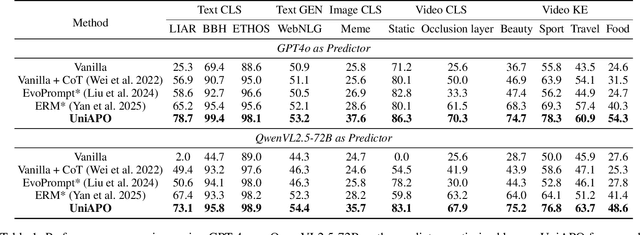
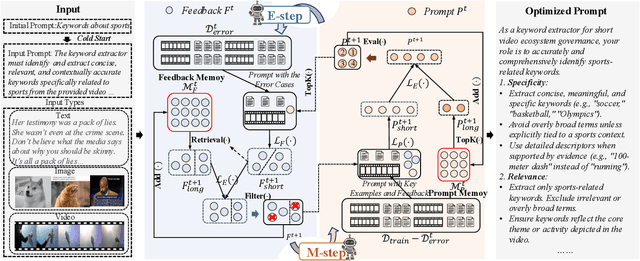
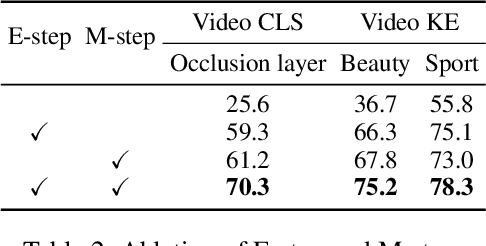
Abstract:Prompting is fundamental to unlocking the full potential of large language models. To automate and enhance this process, automatic prompt optimization (APO) has been developed, demonstrating effectiveness primarily in text-only input scenarios. However, extending existing APO methods to multimodal tasks, such as video-language generation introduces two core challenges: (i) visual token inflation, where long visual token sequences restrict context capacity and result in insufficient feedback signals; (ii) a lack of process-level supervision, as existing methods focus on outcome-level supervision and overlook intermediate supervision, limiting prompt optimization. We present UniAPO: Unified Multimodal Automated Prompt Optimization, the first framework tailored for multimodal APO. UniAPO adopts an EM-inspired optimization process that decouples feedback modeling and prompt refinement, making the optimization more stable and goal-driven. To further address the aforementioned challenges, we introduce a short-long term memory mechanism: historical feedback mitigates context limitations, while historical prompts provide directional guidance for effective prompt optimization. UniAPO achieves consistent gains across text, image, and video benchmarks, establishing a unified framework for efficient and transferable prompt optimization.
Show-o2: Improved Native Unified Multimodal Models
Jun 18, 2025



Abstract:This paper presents improved native unified multimodal models, \emph{i.e.,} Show-o2, that leverage autoregressive modeling and flow matching. Built upon a 3D causal variational autoencoder space, unified visual representations are constructed through a dual-path of spatial (-temporal) fusion, enabling scalability across image and video modalities while ensuring effective multimodal understanding and generation. Based on a language model, autoregressive modeling and flow matching are natively applied to the language head and flow head, respectively, to facilitate text token prediction and image/video generation. A two-stage training recipe is designed to effectively learn and scale to larger models. The resulting Show-o2 models demonstrate versatility in handling a wide range of multimodal understanding and generation tasks across diverse modalities, including text, images, and videos. Code and models are released at https://github.com/showlab/Show-o.
UniRL: Self-Improving Unified Multimodal Models via Supervised and Reinforcement Learning
May 29, 2025Abstract:Unified multimodal large language models such as Show-o and Janus have achieved strong performance across both generation and understanding tasks. However, these models typically rely on large-scale datasets and require substantial computation during the pretraining stage. In addition, several post-training methods have been proposed, but they often depend on external data or are limited to task-specific customization. In this work, we introduce UniRL, a self-improving post-training approach. Our approach enables the model to generate images from prompts and use them as training data in each iteration, without relying on any external image data. Moreover, it enables the two tasks to enhance each other: the generated images are used for understanding, and the understanding results are used to supervise generation. We explore supervised fine-tuning (SFT) and Group Relative Policy Optimization (GRPO) to optimize the models. UniRL offers three key advantages: (1) it requires no external image data, as all training samples are generated by the model itself during training; (2) it not only improves individual task performance, but also reduces the imbalance between generation and understanding; and (3) it requires only several additional training steps during the post-training stage. We evaluate UniRL on top of Show-o and Janus, achieving a GenEval score of 0.77 for Show-o and 0.65 for Janus. Code and models will be released in https://github.com/showlab/UniRL.
DiCo: Revitalizing ConvNets for Scalable and Efficient Diffusion Modeling
May 16, 2025Abstract:Diffusion Transformer (DiT), a promising diffusion model for visual generation, demonstrates impressive performance but incurs significant computational overhead. Intriguingly, analysis of pre-trained DiT models reveals that global self-attention is often redundant, predominantly capturing local patterns-highlighting the potential for more efficient alternatives. In this paper, we revisit convolution as an alternative building block for constructing efficient and expressive diffusion models. However, naively replacing self-attention with convolution typically results in degraded performance. Our investigations attribute this performance gap to the higher channel redundancy in ConvNets compared to Transformers. To resolve this, we introduce a compact channel attention mechanism that promotes the activation of more diverse channels, thereby enhancing feature diversity. This leads to Diffusion ConvNet (DiCo), a family of diffusion models built entirely from standard ConvNet modules, offering strong generative performance with significant efficiency gains. On class-conditional ImageNet benchmarks, DiCo outperforms previous diffusion models in both image quality and generation speed. Notably, DiCo-XL achieves an FID of 2.05 at 256x256 resolution and 2.53 at 512x512, with a 2.7x and 3.1x speedup over DiT-XL/2, respectively. Furthermore, our largest model, DiCo-H, scaled to 1B parameters, reaches an FID of 1.90 on ImageNet 256x256-without any additional supervision during training. Code: https://github.com/shallowdream204/DiCo.
Seaweed-7B: Cost-Effective Training of Video Generation Foundation Model
Apr 11, 2025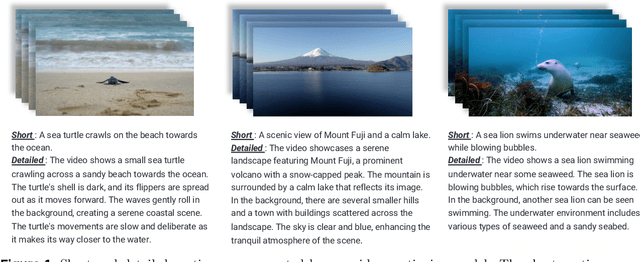
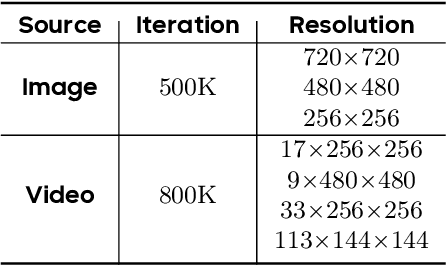


Abstract:This technical report presents a cost-efficient strategy for training a video generation foundation model. We present a mid-sized research model with approximately 7 billion parameters (7B) called Seaweed-7B trained from scratch using 665,000 H100 GPU hours. Despite being trained with moderate computational resources, Seaweed-7B demonstrates highly competitive performance compared to contemporary video generation models of much larger size. Design choices are especially crucial in a resource-constrained setting. This technical report highlights the key design decisions that enhance the performance of the medium-sized diffusion model. Empirically, we make two observations: (1) Seaweed-7B achieves performance comparable to, or even surpasses, larger models trained on substantially greater GPU resources, and (2) our model, which exhibits strong generalization ability, can be effectively adapted across a wide range of downstream applications either by lightweight fine-tuning or continue training. See the project page at https://seaweed.video/
 Add to Chrome
Add to Chrome Add to Firefox
Add to Firefox Add to Edge
Add to Edge